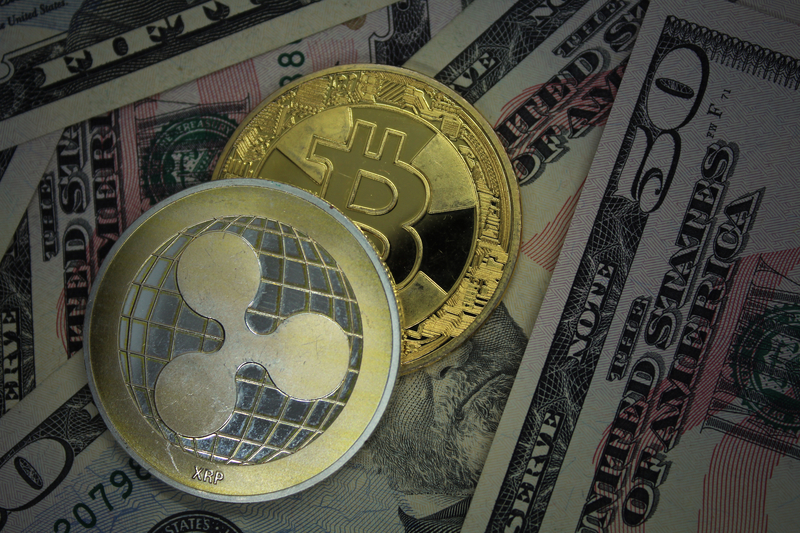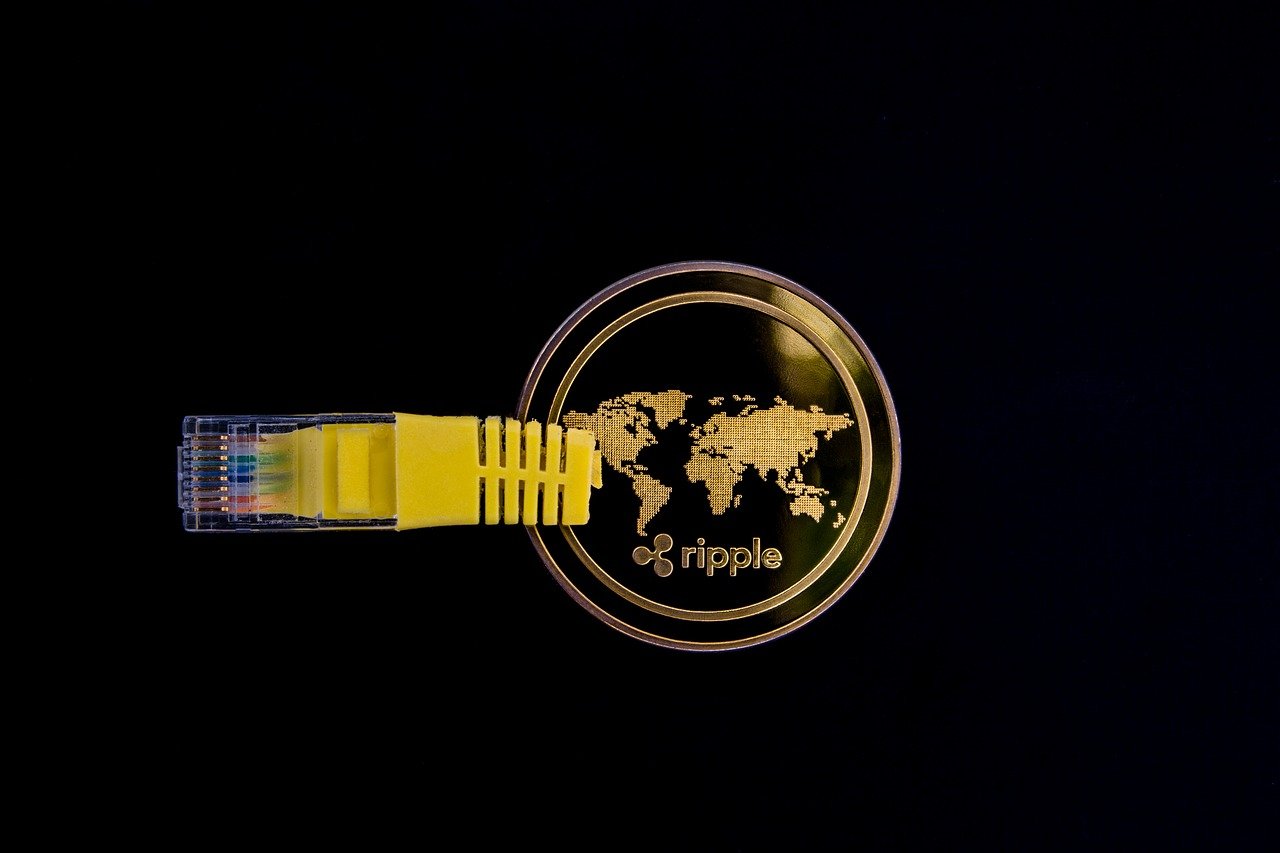Ripple is one of the most well-known cryptocurrencies, for example from products such as the Ripple Packet. It has an interesting and multifaceted history, as well as great potential for growth in the near future.
The story of Ripple – how the first cryptocurrency was created
Initially, Ripple was very far from any crypto technology. Its original brand name was Ripplepay. It was founded by Ryan Fugger in 2004 in Vancouver, Canada, long before Satoshi Nakamoto released his first version of the Bitcoin blockchain. Ripplepay did not use any blockchain technology, but it had the same goal – to provide its users with the tools to enable secure money transactions around the world. Even Satoshi Nakamoto knew about this payment system, giving the remark: “Ripple is interesting because it is the only other system that does something with trust beyond concentrating it on a central server”. It operated this way for many years, but in 2012 Fugger sold it to Jed McCaleb, Arthur Britto, and David Schwartz, who wanted to use it for their future digital currency network. The new company was called OpenCoin.
OpenCoin built new technology using Ripplepay source code and created a ledger-based payment network for financial institutions. In the same year, McCaleb, former founder of Mt.Gox, left the company, founding Stellar and forking Ripple into the new Stellar Lumens network. As a co-founder of Ripple, he had a large amount of XRP, the network’s native coins. McCaleb has already sold 1 billion XRP and still has over 8 billion.
In 2013, the OpenCoin company was renamed Ripple Labs, Inc, and created the open-source code for the Ripple Network. In 2015, the company name was changed again, shortening the name to “Ripple”. Since 2016, Ripple has been licensed by the New York State Department of Financial Services’ BitLicense to perform cryptocurrency operations.
Over the years, Ripple has developed its solutions for the banking industry, including xRapid and xVia, both designed to send payments between banks around the world. The former requires XRP for settlement; the latter needs no medium of value. Both are based on xCurrent, Ripple’s main open-source product.

Modern technology
XRP Ledger (XRPL) does not use a proof-of-work (PoW) or proof-of-stake (PoS) algorithm like the Ethereum 2.0 blockchain. Instead, XRP Ledger relies on a configuration called XRP Ledger Consensus Protocol to verify account balances and perform transactions. Compared to other types of blockchain consensus, the XRP Ledger consensus protocol has noticeably better performance.
The XRP ledger is maintained by independent participants. For any transaction to be successful, there should be an agreement (consensus) between independent validators. Acting as a validator is an option available to any entity. While PoW blockchains create blocks – segmented segments of the entire chain, each containing specific information – XRPL creates “ledgers”.
Each ledger contains information such as data linking it to the previous ledger in the chain, account totals, etc. Transactions and network changes must reach the approval of a certain number of validators. It takes three to five seconds to validate each block (ledger) in an XRP ledger. This is therefore much faster than Bitcoin’s 10-minute block time.
RCL is often confused with XRP (also known as the Ripple digital asset). XRP is the native RCL token used to facilitate the transfer of money between different currencies on the network.
Initially, 100 billion XRP units were created, an official number that will not increase or decrease according to protocol. XRP was created before Ripple Labs was founded. The creators of XRP donated 80% of all XRP to the company, keeping 20 billion units for themselves. This aspect of XRP is one of the reasons why banks and companies have moved to digital currency; it cannot be mined because it is centrally controlled.
One of the main functions of XRP is as a bridging currency. Traditional clearing systems use the USD as a common currency when converting money. XRP was designed to replace the USD as the preferred settlement currency for financial institutions. By first converting the value of the fiat currency to digital XRP rather than USD, exchange rate fees and margins can be eliminated and processing time will be reduced.
XRP and Ripple have some degree of interdependence. At the most basic level, Ripple’s valuation is inextricably linked to the market price of XRP because Ripple owns so many tokens. Last year, Ripple decided to place 55 billion of its XRP tokens in an escrow account in good faith towards other network participants that one day they would not simply dump all their XRP tokens, driving down the price. Ripple plans to sell these XRP tokens in escrow to new network participants. The higher the price of XRP, the more money Ripple can raise from selling them.
Each transaction made on RCL destroys a tiny fraction of XRP (the average fee is 0.0001 XRP). This transaction cost is intended to prevent spam or denial of service attacks on the network. The fee is not paid to any party; XRP is permanently destroyed. Since there are a finite number of XRP tokens, eliminating a bit of XRP with each transaction makes XRP less available. Over the long term, XRP holders will benefit because this scarcity will increase the value of their tokens.
The transaction fee on RCL can be adjusted and can be changed through amendments. Importantly, as the value of XRP increases, the incremental amount of XRP destroyed with each transaction becomes smaller. While it is impossible to predict exactly when XRP will cease to exist, it is safe to say that it will not happen any time soon. Estimates range from decades to several hundred years – which is plenty long. The fact that Ripple has introduced flexibility in the XRP fee schedule suggests that they will look to reduce this fee as transaction volumes increase to preserve the longevity of the Protocol.
Rise and fall
Ripple, which has mostly remained on the sidelines of the recent rise in cryptocurrency prices, has recently come to life, seeing its price rise by as much as 84 percent to $0.51. The cryptocurrency doubles as a payment network and its price has increased by around 7500 per cent this year. Its market capitalisation has risen to $17 billion, up from $237 million earlier this year.
Ripple’s price jump follows news that Japan and South Korea will begin testing the technology to reduce the timeframe and costs associated with international fund transfers between the two countries. The tests will be conducted by a consortium of banks in both countries and will run until January 31. They are expected to result in savings of around 60% compared to conventional methods.
Ripple payments network has more than 100 customers testing its service. In an interview with the Financial Times earlier this month, Daniel Aranda, the company’s managing director for Europe, said 75 of those customers had already gone through testing to production. The spike in the cryptocurrency’s price increases its network effects. It could also help the company increase its dollar reserves for future business growth. Ripple joins a number of other cryptocurrencies that have made solid gains over the past few days and pushed the overall market capitalisation of cryptocurrencies above $500 billion. This is the second major jump in its price. The cryptocurrency experienced a similar jump in May, when its price tripled from $0.13 to $0.39 in less than 10 days. This price shock occurred while cryptocurrency valuations were rising around the world.
So it seems that despite the difficulties, Ripple has a promising future ahead. It is worth following the further development of this currency and the system surrounding it.

